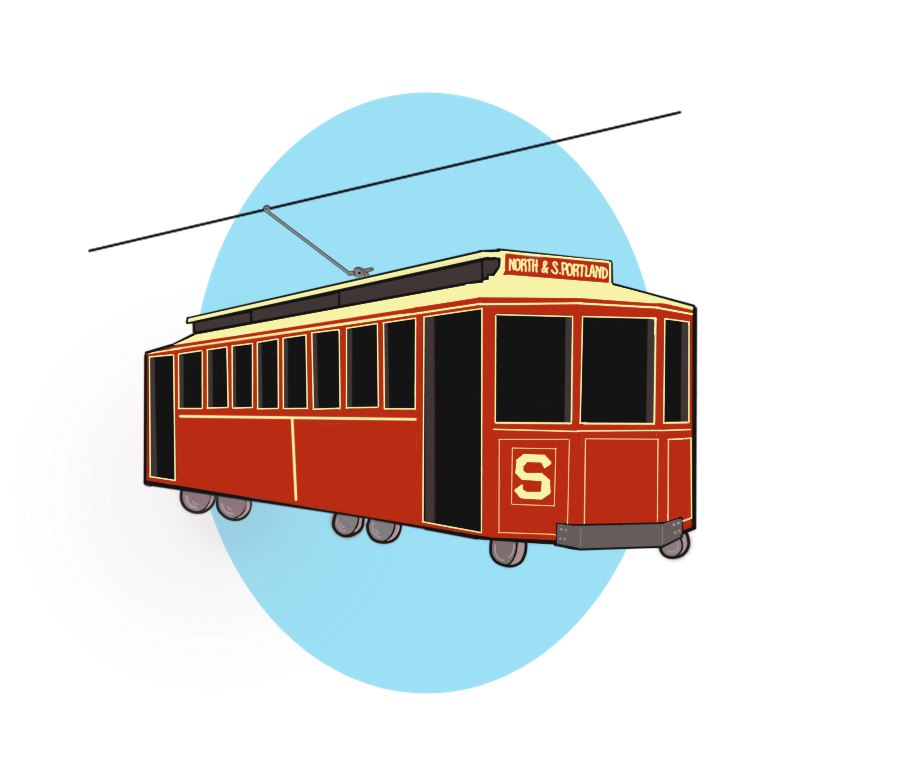
Long before there were TriMet bus stops and interstate highways, or even a college on Palatine Hill, South Portland had a form of public transportation that was distinctly alien to most of its contemporary residents. Contrary to what today’s casual observer might expect, Portland was once crisscrossed by a haphazard network of streetcars and interurban rail lines.
John Miller, a local enthusiast and founder of the Trolley Project, first became aware of this little-known history in 1978.
“I bought a house on Boones Ferry Road just north of the entrance to Greenwood Hills Cemetery,” Miller said. “My next-door neighbor, Doris Graham, told me, ‘Why John, a street car went right through your yard!’”
This hint at local history resurfaced again in 2013 with the release of a vague map of a local trolley line in the Greenwood Hills Cemetery newsletter. The Trolley Project did not come to fruition until the COVID-19 pandemic, which left Miller with newfound free time to post about the streetcar line on Facebook. This quickly led to a cascade of research, sleuthing and community activity that culminated into the Trolley Project.
In time, the project uncovered the history of the Metropolitan Railway Company’s F Line. According to the Multnomah Historical Association, the line was founded in 1890 by Sen. George Steele to bring passengers to his South Portland estate. The line would have followed a route not unlike that of the Pioneer Express today, spending most of its time between S Macadam and SW Barbur Avenue and sharing much of its passage with the current route of I-5.
As one of the nation’s first electric railways, the next three decades and several bankruptcies would see the F Line passed between various owners. On any given day a railroad car would have filled numerous roles, including carrying merchandise and shoppers to stores, materials and products to and from manufacturers, workers to places of employment and even bodies and mourners to the cemeteries north of Lewis & Clark.
Little remains of the F Line today. But a curious observer, guided by the numerous resources, maps and images provided on the Trolley Project’s website, would still be able to find trenches, walls and piers left over from the line.
Far from being a piece of obscure historical interest, the fashion in which the F Line and others like it were stripped from the urban landscape tells a compelling — if not dark —story about Portland and the United States as a whole. The fatal blow to Portland’s small railroads occurred in 1924, when a reactionary slate of politicians composed largely of Klu Klux Klan members swept into power throughout Oregon. According to the Sightline Institute, this new government implemented a number of explicitly racist policies, which included a ban on high density housing in most of Portland’s neighborhoods.
This shift in public policy ensured that Portland’s rail lines, even those that survived the strains of the Great Depression into World War II, would never be capable of competing with the burgeoning automobile industry. What remained of these lines was torn up in favor of highways by the 1950s, and large sections of track were destroyed entirely to make way for the construction of I-5 in 1960.
Illustration by Faith Gallegos
Subscribe to the Mossy Log Newsletter
Stay up to date with the goings-on at Lewis & Clark! Get the top stories or your favorite section delivered to your inbox whenever we release a new issue.

Leave a Reply